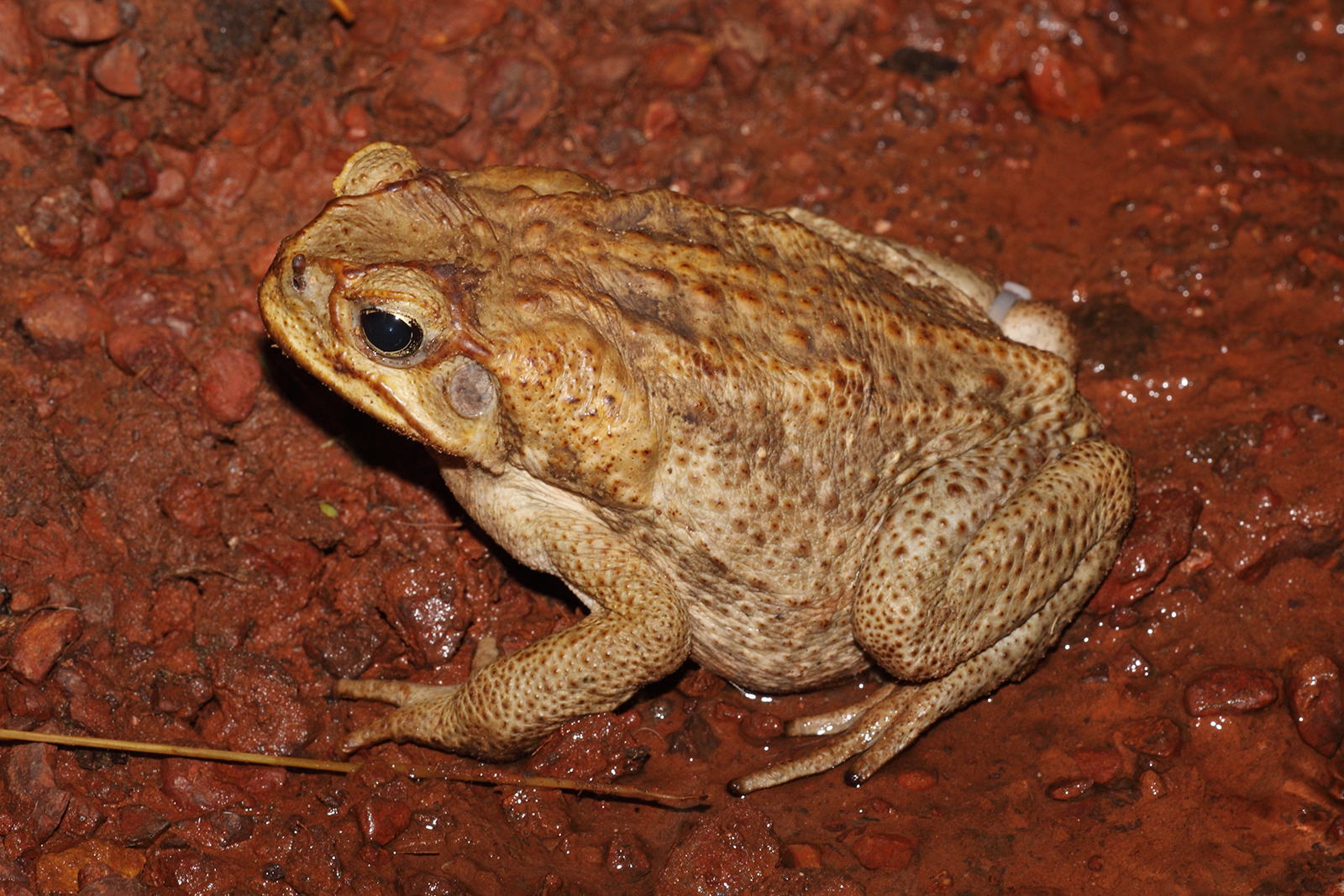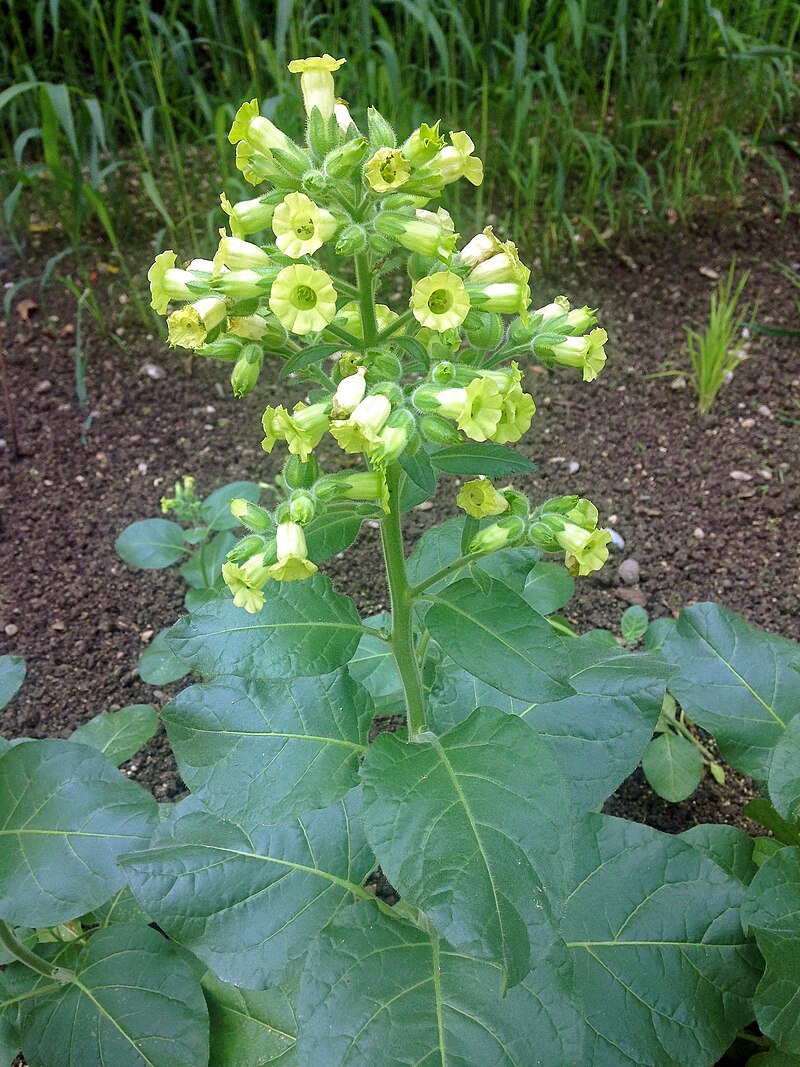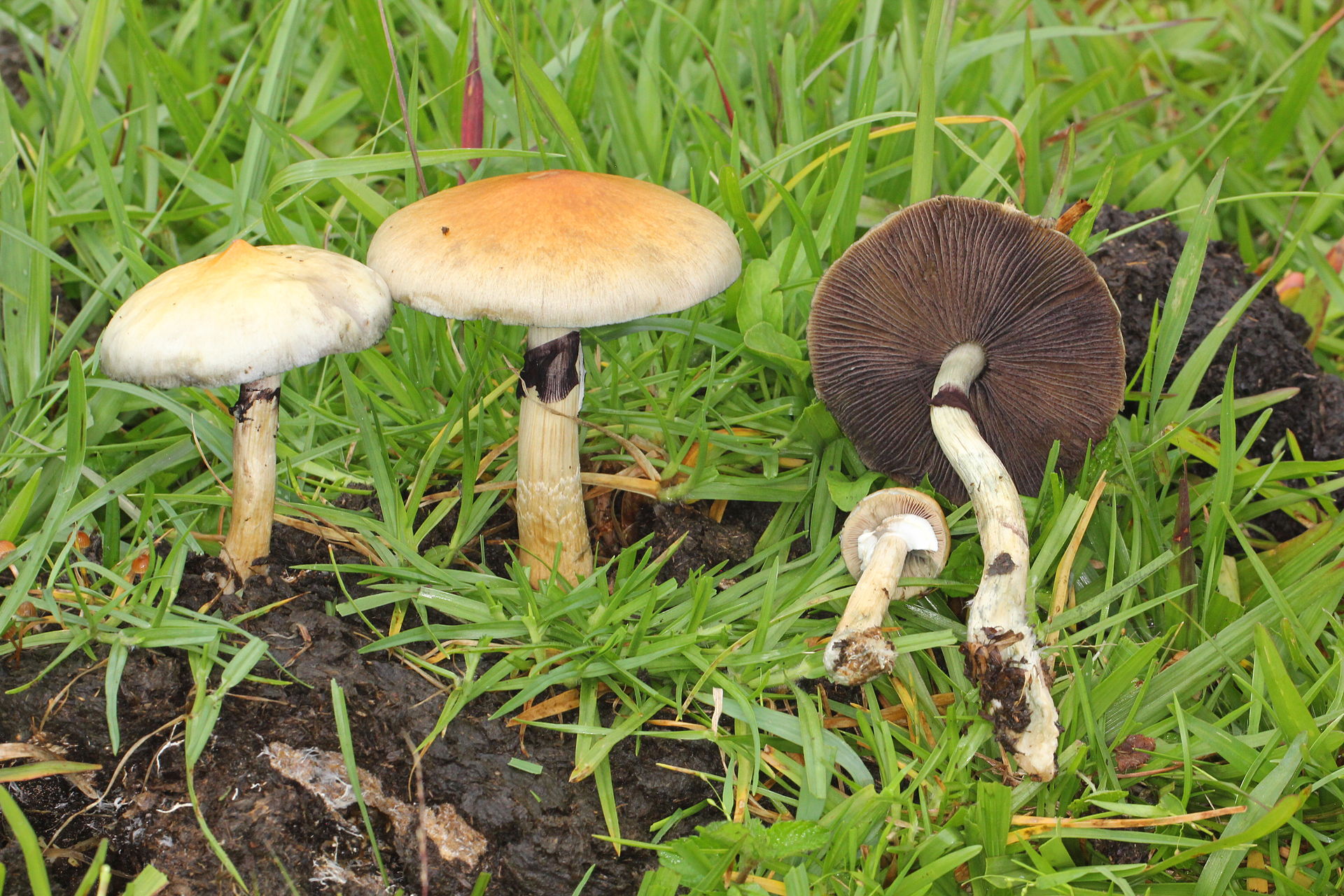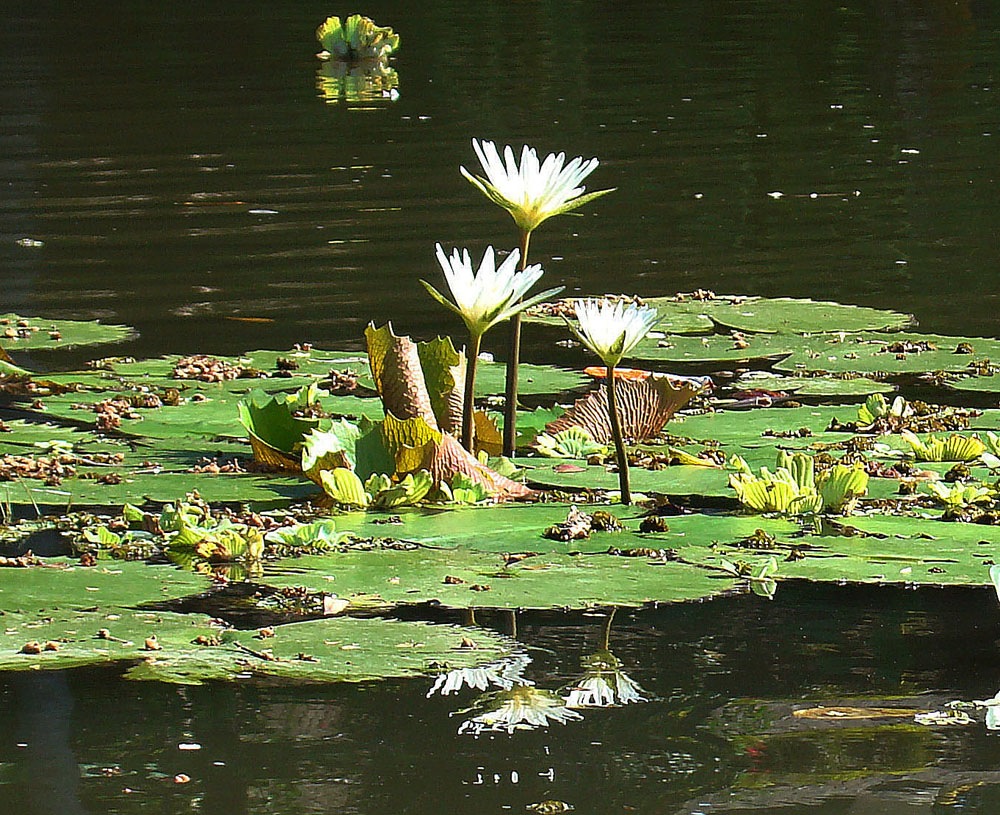
Maya stone carving from Copan
マヤ医学
Maya medicine
☆ マヤ医学(Maya medicine) は、古代マヤ文明における健康と医学に関するものである。それは、心、身体、宗教、儀式、科学が複雑に融合したものだった。すべての人々にとって重要な医 学は、一般的にその地位を継承し、広範な教育を受けた選ばれた少数の人々によってのみ実践されていた。これらのシャーマンは、肉体世界と霊界をつなぐ媒介 者としての役割を果たした。彼らは治癒、予知、自然現象の制御を目的として魔術を実践した。医学は宗教と密接に関係していたため、マヤの医学者は膨大な医 学知識と技術を持つことが不可欠だった。 マヤの医学を理解する上で重要なのは、マヤは病気を、何らかの不品行によって怒った超自然的な存在によって魂が捕らわれることと同一視していたことであ る。このため、病気を治すには儀式、浄化、薬草療法の要素が含まれた。マヤの民族医学の研究によると、超自然的な原因が病気に関係しているにもかかわら ず、マヤの医学書の大部分は、特定の植物が人間の体系に及ぼす影響の客観的な観察に基づく症状の治療に費やされている。薬草療法は、摂取、喫煙、吸引、皮 膚への擦り付け、さらには血流への物質の迅速な吸収を強制するための浣腸の形で使用された。浄化法としては、絶食、発汗、体内の物質を洗い流す瀉血などが あった(→「マヤ医学とはなにか」)。
| Maya medicine
concerns health and medicine among the ancient Maya civilization. It
was a complex blend of mind, body, religion, ritual and science.
Important to all, medicine was practiced only by a select few, who
generally inherited their positions and received extensive education.
These shamans acted as a medium between the physical world and spirit
world. They practiced sorcery for the purpose of healing, foresight,
and control over natural events. Since medicine was so closely related
to religion, it was essential that Maya medicine men had vast medical
knowledge and skill. In understanding Maya medicine, it is important to recognize that the Maya equated sickness with the captivity of one's soul by supernatural beings, angered by some perceived misbehavior.[1] For this reason, curing a sickness involved elements of ritual, cleansing and herbal remedy. Research of Maya ethno-medicine shows that though supernatural causes are related to illness, a large percentage of Maya medical texts are devoted to the treatment of symptoms based upon objective observations of the effects of certain plants on the human system.[2] Herbal remedies were ingested, smoked, snorted, rubbed on the skin, and even used in the form of enemas to force rapid absorption of a substance into the blood stream. Cleansing techniques included fasting, sweating and purging flushed substances out of the body.[3] |
マヤ医学は、古代マヤ文明における健康と医学に関するものである。それ
は、心、身体、宗教、儀式、科学が複雑に融合したものだった。すべての人々にとって重要な医学は、一般的にその地位を継承し、広範な教育を受けた選ばれた
少数の人々によってのみ実践されていた。これらのシャーマンは、肉体世界と霊界をつなぐ媒介者としての役割を果たした。彼らは治癒、予知、自然現象の制御
を目的として魔術を実践した。医学は宗教と密接に関係していたため、マヤの医学者は膨大な医学知識と技術を持つことが不可欠だった。 マヤの医学を理解する上で重要なのは、マヤは病気を、何らかの不品行によって怒った超自然的な存在によって魂が捕らわれることと同一視していたことであ る。このため、病気を治すには儀式、浄化、薬草療法の要素が含まれた。マヤの民族医学の研究によると、超自然的な原因が病気に関係しているにもかかわら ず、マヤの医学書の大部分は、特定の植物が人間の体系に及ぼす影響の客観的な観察に基づく症状の治療に費やされている。薬草療法は、摂取、喫煙、吸引、皮 膚への擦り付け、さらには血流への物質の迅速な吸収を強制するための浣腸の形で使用された。浄化法としては、絶食、発汗、体内の物質を洗い流す瀉血などが あった。 |
| Medicine Medicine men, known to the ancient Maya as ah-men, held the special ability to alter consciousness to determine causes for events not understood, such as reasons for illness or misfortune.[4] Since it was perceived by the Maya that sickness was a punishment for a mistake or transgression, it was important that the healer inquire about details of the past of the sick person. This was done in a methodological fashion, first inquiring about ascriptive attributes, followed by specific events of the person's life, and lastly about circumstantial or acquired attributes.[5] This aspect of the medicine man's job would be similar to a modern-day therapy session. In addition to ritualistic and spiritual elements, the medicine man had extensive knowledge of medicinal plants and how they should be used. After studying the symptoms of a sickness, a medicine man may prescribe a remedy to his patient. The number of times or days that the remedy should be ingested or applied depended on an individual's gender; typically the number thirteen was associated with men, and the number nine with women. The Maya had a broad range of vocabulary to describe internal human anatomy, such as hobnel for intestines and kah for bile, as well as knowledge of general functions of body systems, in particular the female reproductive system.[6] In pathology, over two hundred terms described organic conditions, such as thuhuzen meaning a deep bronchial cough, zen meaning largyneal cough, and tiptec meaning intestinal pain with pulsation, speculated to have been appendicitis. The Maya acknowledged mental afflictions such as melancholia and hallucinations, were capable of understanding the grouping of symptoms relating to contagious diseases, and identified several diseases including pinta and leishmaniasis. The medicine men of ancient Maya society provided many services to their communities and were held in high regard. Known for their extensive knowledge and spirituality, medicine men were called upon for many reasons, but most often for their healing capabilities. These Maya doctors often employed specialists for specific healing techniques such as bone-setting and childbirth, similar to the method of modern doctors. Bone setting was done by a designated bone-binder, or kax-bac.[6] In addition to his duties as a doctor and sorcerer, a medicine man not only cured diseases, but also sporadically accepted compensation to cause them. The ah-man was also called ah-pul-yaah, the "disease thrower".[7] New evidence indicates dental modification, widely established as an aesthetic practice, was also practiced for medical purposes; skeletal remains recovered at the Piedras Negras S-Sector site indicated dental extractions on teeth affected by caries among other methods of dental modification.[8] Dental surgeons made jade and turquoise prostheses and filled teeth with iron pyrite for practical use past the well-documented aesthetic use of dental inlays for status display.[9] Surgical practices included wound suturing with human hair and fish bones and fracture reduction.[9] Although a large number of Mesoamerican civilizations around the Classic period practiced trepanation with great dexterity and success, such as the Zapotec in Oaxaca, little evidence of drilling trepanation is found in the Maya region outside of skull impressions surmised to have more to do with cranioplasty than medical relief.[10] |
医学 古代マヤでは「アーメン」と呼ばれていた医学者は、意識を変容させ、病気や不幸の理由など、理解されていない出来事の原因を特定する特別な能力を持っていた[4]。 マヤでは、病気は過ちや罪に対する罰であると認識されていたため、治療者は病人の過去の詳細を尋ねることが重要であった。これは方法論的なやり方で行わ れ、まず先天的な属性について尋ね、次にその人の人生の具体的な出来事について尋ね、最後に状況的または後天的な属性について尋ねた[5]。 儀式的、精神的な要素に加えて、薬師は薬草とその使用方法に関する幅広い知識を持っていた。病気の症状を調べた後、薬師は患者に治療薬を処方する。レメ ディを摂取したり塗ったりする回数や日数は個人の性別によって異なり、一般的に13という数字は男性に、9という数字は女性に関係していた。 マヤは、腸を意味するホブネルや胆汁を意味するカーなど、人体内部の解剖学的構造を表す幅広い語彙を持っていたほか、特に女性の生殖器系など、身体システ ムの一般的な機能に関する知識も持っていた[6]。病理学では、深い気管支の咳を意味するトゥフゼン、ラルギニアの咳を意味するゼン、虫垂炎と推測される 脈動を伴う腸の痛みを意味するティプテックなど、200以上の用語が器質的な状態を表していた。マヤはメランコリアや幻覚などの精神的な苦痛を認め、伝染 病に関する症状のグループ化を理解することができ、ピンタやリーシュマニア症などいくつかの病気を特定した。 古代マヤ社会の医学者たちは、自分たちのコミュニティに多くの奉仕を行い、高く評価されていた。その幅広い知識と精神性で知られる医学者は、多くの理由で 呼ばれたが、最も多かったのはその治癒能力であった。マヤの医師たちは、現代の医師と同じように、整骨や出産など特定の治療技術に特化した専門家を雇うこ とが多かった。医師や魔術師としての職務に加え、メディスンマンは病気を治すだけでなく、病気を引き起こすための報酬を受け取ることもあった。アーマンは アー・プル・ヤー、「病気投げ」とも呼ばれた[7]。 ピエドラス・ネグラスSセクター遺跡から出土した骨格標本からは、歯列修整の他の方法の中で、う蝕に冒された歯の抜歯が行われていたことが示されている [8]。歯科外科医は、よく文書化されているステータスを示すためのデンタルインレーの審美的な使用に加えて、実用的な使用のためにヒスイやトルコ石の補 綴物を作ったり、黄鉄鉱を歯に詰めたりした[9]。 古典期周辺のメソアメリカ文明の多くは、オアハカのサポテカ人のように器用にトレパネーションを実践し、成功を収めていたが、マヤ地方では、医療的救済よ りも頭蓋形成術と関係があると推測される頭蓋骨の印象以外には、トレパネーションを掘削した証拠はほとんど見つかっていない[10]。 |
| Ritual practices Maya rituals differ from region to region, but many similar patterns in ceremonies, whether being performed for individual or group need, have been noted. First, all rituals are preceded by foresight of a medicine man, who determines the day of the ceremony through calendrical divination. The medicine men of the Ixil Maya of Guatemala, who kept track of days in their heads, would lay out red seeds from the coral tree onto the pre-Columbian calendar to count them and figure out what day best suited the specific ritual.[11] As a symbol of a spiritual purification, the individual or individuals would observe a fasting and abstinence period before the ritual day. Consistent patterns are shown throughout the Maya world as to the happenings of the day of the ritual as well. During the ceremony, elements including expulsion of the evil spirit from the participant, incensing of the idols, prayers, offerings, and sacrifices were all practiced. If the ritual was used to cure a disease, the offering may be in the form of food or ornaments, and sacrifice in the form of human bloodletting.[12] Following the ceremony would be dancing, feasting, and ritual drinking by all, characterized by the Spaniards as a general drunkenness. Today the Maya keep many of the ritualistic traditions of their ancestors. Elements of prayer, offerings, blood sacrifice (replacing human blood with that of sacrificed chickens), burning of copal incense, dancing, and ritual drinking continue in traditional ceremonies. It is noted that even ritualistic practice can have real effects on neurotransmitters and immunological functioning.[13]  Morning glory was used by ancient Mayan healers. |
儀式の慣習 マヤの儀式は地域によって異なるが、個人のためであれ集団のためであれ、儀式には多くの類似したパターンがあることが指摘されている。まず、すべての儀式 はメディスンマンの先見の明によって行われ、メディスンマンは暦占いによって儀式の日を決定する。グアテマラのイクシルマヤのメディスンマンは、頭の中で 日を記録しており、サンゴの木の赤い種をコロンブス以前の暦の上に並べて数え、特定の儀式に最も適した日を割り出していた[11]。精神的な浄化の象徴と して、個人または個人は儀式の日の前に断食と禁欲の期間を守る。 儀式当日の出来事についても、マヤ世界全体で一貫したパターンが示されている。儀式では、参加者の悪霊の追放、偶像への焼香、祈り、供え物、生贄などの要 素がすべて行われた。儀式が病気を治すためのものである場合、供え物は食べ物や装飾品の形で、生贄は人間の血を抜くという形で捧げられた[12]。儀式の 後には、踊り、饗宴、そして儀式的な飲酒が行われ、スペイン人たちはこれを一般的な酩酊状態として特徴付けた。 今日、マヤは祖先の儀式的伝統の多くを守っている。祈り、供え物、生け贄(人間の血を生け贄の鶏の血に置き換える)、コーパルの香の焚き付け、踊り、儀式 的な飲酒といった要素が、伝統的な儀式の中で続いている。儀式的な実践でさえ、神経伝達物質や免疫学的機能に実際に影響を及ぼす可能性があることが指摘さ れている[13]。  アサガオは古代マヤのヒーラーに使われていた。 |
| Sweat baths An important purification element to the ancient Maya was the sweat bath, temezcal. Similar to a modern-day sauna, sweat baths were constructed of stone walls and ceilings, with a small opening in the top of the ceiling. Water poured onto the hot rocks in the room created steam, offering a setting in which to sweat out impurities. Sweat baths were used for a range of conditions and situations. New mothers who had recently conceived a child would seek revitalization in them, while people who were sick could find healing power in sweating. Maya rulers made a habit out of visiting the sweat baths as well because it left them feeling refreshed and, as they believed, cleaner. In addition, Maya rulers performed ritual purification ceremonies to appease the gods and secure the well-being of their communities.[14] It is hypothesized that kings popularized this method of healing because of their regular use of sweat baths. Archeologists have uncovered sweat baths at sites including Tikal, Aguateca and Nakbe, but the most impressive find to date is in Piedras Negras, a Classic Maya city in Guatemala. In addition to the recognizable palaces, temples and ball courts, archaeologists have uncovered eight stone buildings that served as sweat baths to the Maya royalty. Steambaths are still in use among the contemporary Tzotzil and Tzeltal Maya of highland Chiapas, and are associated with a wide range of medicinal plants and postpartum therapies.[15] |
サウナ 古代マヤにとって重要な浄化の要素は、テメスカルという汗風呂だった。現代のサウナに似ているが、汗蒸幕は石の壁と天井で構成され、天井の上部には小さな 開口部があった。部屋の中の熱い岩に水をかけると蒸気が発生し、不純物を汗で排出する環境を提供した。汗蒸幕はさまざまな症状や状況に対応した。子供を身 ごもったばかりの母親は汗を流して活力を取り戻し、病気の人は汗を流すことで癒しの力を得た。 マヤの支配者たちは、汗をかくことでリフレッシュし、より清潔になると信じていたため、汗蒸幕に通うことを習慣としていた。さらに、マヤの支配者たちは、 神々を鎮め、自分たちのコミュニティの幸福を確保するために、儀式的な浄化の儀式を行った。考古学者たちは、ティカル、アグアテカ、ナクベなどの遺跡で汗 蒸幕を発見しているが、現在までに最も印象的な発見は、グアテマラの古典期マヤの都市ピエドラス・ネグラスである。認識できる宮殿、神殿、球技場に加え、 考古学者たちはマヤの王族が汗を流す浴場として使用していた8つの石造りの建物を発見した。蒸し風呂は、チアパス高地に住む現代のツォツィル・マヤやツェ ルタル・マヤの間で現在も使用されており、さまざまな薬草や産後療法に関連している[15]。 |
| Plant and herbal medicine The study and observation of plants has been of high importance to the Maya for centuries. However, the study of medicinal plants was limited to the priestly class. Plants and herbal remedies were often used in collaboration with other techniques to cure disease. Knowledge of the effects of certain plants on human beings was often used to prescribe an antidote to a particular ailment, but it is also important to note that medicine men also frequently relied on the color of a plant or other remedy in certain situations. For instance, yellow plants and fruits were used in curing jaundice; red for problems characterized by blood; and burned feathers of red birds in curing yellow fever.[16] In cases of skin irritation, wounds and headaches, fresh vegetation was often used in the form of plasters applied directly to the skin. Plasters were also rubbed on the skin to shield spirits. Depending on the ailment, plants were boiled and used in herbal drinks and/or baths, eaten raw, snorted, smoked, or inserted into one of the body's orifices. Common plants used for medicine include, but are not limited to, chili peppers, cacao, tobacco, agave, and the pitarilla tree. In addition, animal parts, such as those from the crocodile, insects, fish and birds were combined into the herbal concoctions. In most cases, a mixture of plant and animal product was prepared to cure a specific ailment. |
植物とハーブ療法 植物の研究と観察は、何世紀にもわたってマヤにとって非常に重要であった。しかし、薬草の研究は司祭階級に限られていた。植物と薬草療法は、病気を治すた めに他の技術と協力して使われることが多かった。特定の植物が人間に及ぼす影響に関する知識は、特定の病気に対する解毒剤を処方するためにしばしば用いら れたが、医学者が特定の状況において、植物や他の治療薬の色に頻繁に頼っていたことも重要である。例えば、黄色の植物や果物は黄疸を治すのに使われ、赤色 は血を特徴とする問題に使われ、赤い鳥の羽を焼いたものは黄熱病を治すのに使われた[16]。 皮膚の炎症、傷、頭痛の場合には、新鮮な植物を直接皮膚に貼る絆創膏の形で使用されることが多かった。膏薬はまた、精霊を遮るために皮膚に塗られた。病気 によっては、植物を煮てハーブドリンクや風呂に入れたり、生で食べたり、吸引したり、燻製にしたり、体の開口部に挿入したりした。薬に使われる一般的な植 物には、唐辛子、カカオ、タバコ、リュウゼツラン、ピタリャの木などがあるが、これらに限定されるものではない。さらに、ワニ、昆虫、魚、鳥などの動物の 部位も薬草の調合に使われた。ほとんどの場合、特定の病気を治すために植物と動物の混合物が調合された。 |
| Entheogens Main article: Entheogenics and the Maya For the most part, mind-altering substances were used in rituals by medicine men to achieve a higher state of consciousness or trance-like state[citation needed]. These substances were used for mental and spiritual health purposes. Flora such as peyote, the morning glory, certain mushrooms, tobacco,[17] and plants used to make alcoholic substances, were commonly used. The smoking of tobacco mixed with other plants produced a trance-like state. Alcoholic substances were used at rituals and were extremely strong! Hallucinogens were used to communicate with the spirit world. A number of these substances were used not to cure sickness, but instead for pain relief. In addition, as depicted in Maya pottery and carvings, ritual enemas were used for a more rapid absorption and effect of the substance.[18] In contrast to modern culture, these remedies were used to restore balance and harmony to the bo |
エンセオゲン 主な記事 エンセオジェニックとマヤ ほとんどの場合、精神に作用する物質は、高次の意識状態やトランス状態に達するために、薬師たちによって儀式で使用されていた[要出典]。これらの物質 は、精神的、霊的な健康の目的で使用された。ペヨーテ、アサガオ、ある種のキノコ、タバコ[17]、アルコール性物質の原料となる植物などの植物がよく使 われていた。タバコを他の植物と混ぜて吸うと、トランス状態になった。アルコール性物質は儀式で使われ、非常に強かった!幻覚剤は霊界と交信するために使 われた。これらの物質の多くは、病気を治すためではなく、痛みを和らげるために使われた。さらに、マヤの陶器や彫刻に描かれているように、物質の吸収と効 果をより迅速にするために、儀式用の浣腸が用いられた[18]。 |
| Anderson, E.N. (2005) Political Ecology in a Yucatec Maya Community. University of Arizona Press. Benjamin, Patricia. (2006) Massage and Sweat baths Among the Ancient Maya. Massage Therapy Journal. Spring 2004:144-148. Colby, Benjamin N. (2004) Calendrical Divination by the Ixil Maya of Guatemala. In Divination and Healing: University of Arizona Press. Groark, Kevin P. (1997). "To Warm the Blood, to Warm the Flesh: The Role of the Steambath in Highland Maya (Tzeltal-Tzotzil) Ethnomedicine." Journal of Latin American Lore 20(1):3-96. Groark, Kevin P. (2005). "Vital Warmth and Well-being: Steambathing as Household Therapy among the Tzeltal and Tzotzil Maya of highland Chiapas, Mexico." Social Science & Medicine 61:785-795. Groark, Kevin P. (2010). "The Angel in the Gourd: Ritual, Therapeutic, and Protective Uses of Tobacco (Nicotiana tabacum) among the Tzeltal and Tzotzil Maya of Chiapas, Mexico." Journal of Ethnobiology 30(1):5-30. Houston, Stephen, David Stuart, and Karl Taube. (2006) The Memory of Bones. University of Texas Press. Kunow, Marianna. (2003) Maya Medicine. University of New Mexico Press. Roys, Ralph L. (1931) The Ethno-Botany of the Maya. Tulane University. Sharer, Robert. (2006) The Ancient Maya. Stanford. |
|
| Aztec medicine Curandero |
|
| https://en.wikipedia.org/wiki/Maya_medicine | |
| Entheogenics and the Maya The consumption of hallucinogenic plants as entheogens goes back to thousands of years. Psychoactive plants contain hallucinogenic particles that provoke an altered state of consciousness, which are known to have been used during spiritual rituals among cultures such as the Aztec, the Maya, and Inca.[1] The Maya are indigenous people of Mexico and Central America that had significant access to hallucinogenic substances. Archaeological, ethnohistorical, and ethnographic data show that Mesoamerican cultures used psychedelic substances in therapeutic and religious rituals.[2] The consumption of many of these substances dates back to the Olmec era (1200-400 BCE); however, Mayan religious texts reveal more information about the Aztec and Mayan civilization. These substances are considered entheogens because they were used to communicate with divine powers. "Entheogen," an alternative term for hallucinogen or psychedelic drug, derived from ancient Greek words ἔνθεος (entheos, meaning "full of the god, inspired, possessed") and γενέσθαι (genesthai, meaning "to come into being"). This neologism was coined in 1979 by a group of ethnobotanists and scholars of mythology.[3] Some authors claim entheogens have been used by priests throughout history, with appearances in prehistoric cave art such as a cave painting at Tassili n'Ajjer, Algeria that dates to roughly 8000 BP.[4] Shamans in Mesoamerica served to diagnose the cause of illness by seeking wisdom through a transformational experience by consuming drugs to learn the crisis of the illness[2] |
エンセオジェニックとマヤ エンテオゲンとしての幻覚植物の摂取は、数千年前にさかのぼる。精神作用のある植物には、意識の変容を引き起こす幻覚作用のある粒子が含まれており、アス テカ、マヤ、インカなどの文化圏では、精神的な儀式の際に使用されていたことが知られている[1]。考古学的、民族史的、民俗学的データから、メソアメリ カの文化が治療や宗教的儀式にサイケデリックな物質を使用していたことがわかる[2]。これらの物質の多くの消費はオルメカ時代(紀元前1200~400 年)にさかのぼるが、マヤの宗教文書にはアステカとマヤ文明に関するより多くの情報が記載されている。これらの物質がエンテオゲンと考えられているのは、 神の力と交信するために用いられたからである。「エンセオゲン 」は、幻覚剤またはサイケデリック・ドラッグの別称であり、古代ギリシャ語のἔνθεος(entheos、「神に満ちた、霊感を受けた、取り憑かれた」 の意)とγενέσθαι(genesthai、「存在するようになる」の意)に由来する。この新造語は、1979年に民族植物学者と神話の研究者のグ ループによって造られた[3]。一部の著者は、エンテオゲンは歴史を通して神官によって使用されてきたと主張しており、アルジェリアのタッシリ・ナジェー ルの洞窟壁画のような先史時代の洞窟壁画には、およそ8000BP[4]に描かれている。メソアメリカのシャーマンは、病気の危機を知るために薬物を摂取 し、変容体験を通じて知恵を求めることによって、病気の原因を診断する役割を果たしていた[2]。 |
History of Maya entheogen use Female Rhinella marina (Cane toad) One of the more unusual entheogens employed by the Maya was derived from the skin - and more especially the parotid glands - of the Cane toad, Rhinella marina (formerly known as Bufo marinus), a sacred figure throughout the history of Mesoamerican culture.[2] The poison present in the skin of R. marina contains a number of Bufotoxins that can prove fatal, if the toxic secretion is prepared improperly or consumed in excess.[5] The goal of such consumption of Cane toad venom was generally communication with the spirit world, although recreational use may also have occurred. The primary method for inducing a psychedelic event was through the consumption of psychoactive plants. Some of the psychoactive components of the plants were narcotic analgesics, psilocybin, mescaline, DMT, muscimol, and others.[citation needed] The main goals for the usage of these plants were for spiritual healing, spirit interaction, ancestral communication, enlightenment and wisdom gain, and religious ceremonies. The effects of psychedelic plants during religious rituals is believed to have had an impact on the development and creation of figures, sacred images, mythological creatures, spiritual figures.[6] At present, most of the evidence comes from ancient Maya art and rare examples of residues of substances recovered from ceramic containers. |
マヤのエンテオゲン使用の歴史 雌のヒキガエル(Rhinella marina) マヤが使用していたより珍しいエンテオゲンのひとつは、メソアメリカ文化の歴史を通じて神聖な存在であったカエル、Rhinella marina(以前はBufo marinusとして知られていた)の皮膚、特に耳下腺に由来するものであった[2]。marinaの皮膚に存在する毒は、毒性分泌物が不適切に調製され たり、過剰に消費されたりすると、致命的となる可能性のある多くのブフォトキシンを含んでいる[5]。このようなカエル毒の消費の目的は、娯楽的な使用も あったかもしれないが、一般的には霊界とのコミュニケーションであった。サイケデリックな出来事を誘発する主な方法は、精神作用のある植物を摂取すること であった。植物に含まれる精神活性成分には、麻薬性鎮痛薬、シロシビン、メスカリン、DMT、ムッシモールなどがある[要出典]。これらの植物の主な使用 目的は、精神的な癒し、霊との交流、祖先とのコミュニケーション、悟りや知恵の獲得、宗教的儀式などであった。宗教儀式におけるサイケデリック植物の効果 は、人物像、聖なるイメージ、神話上の生き物、霊的な人物の発展や創造に影響を与えたと考えられている[6]。現在、その証拠のほとんどは、古代マヤの美 術品や、陶器の容器から回収された物質の残留物のまれな例から得られている。 |
| Species and their effects Tobacco and fermented drinks  Nicotiana rustica (Maya: piziet) Tobacco (Nicotiana spp.) contains the alkaloid nicotine, which affects the nervous system. Tobacco was smoked, inhaled, chewed, and occasionally mixed with the leaves of Datura, (another genus in the family Solanaceae, but, unlike Nicotiana, one rich in deliriant tropane alkaloids), which enhanced the hallucinogenic effect of the activity. Wild tobacco, which the Maya called 'piziet', also played a part in sacred ceremonies.[7] It is believed that certain substances were used to produce visions and to minimize pain caused by self-sacrifice, a common practice in Mayan civilization. The Maya used enemas, a procedure in which liquid or gas is injected into the rectum, to manage certain substances in order to intensify the effect of the drug.[8] Archaeological evidence provides us with ceramic goods that depict images in which psychedelic enemas were utilized in rituals; some figures are vomiting while others receive enemas. The paintings on ceramic vessels from the Mayan late classic period show pots overflowing with foam from fermented drinks, depict individuals talking to one another as they receive enemas.[8] The Maya also consumed an alcoholic beverage called balché, which is an infusion of the bark of Lonchocarpus longistylus (see page Lonchocarpus violaceus) mixed with honey from bees fed on a type of morning glory with a high ergine content.[2] Intoxication was associated with the practice of divination, a ritual meant to facilitate direct interaction with the spirits to foretell the future or understand events that would otherwise be unclear, including illness, a shift in fortune, and the results of war. Since the alcoholic content of balaché seemed to have been relatively low, it had to be ingested in large quantities to reach a significant level of drunkenness.[9] Pulque was another alcoholic drink made by fermenting the sap of the maguey plant.[10] Different ceramic products from the classic Mayan period produced vessels marked with symbols of pulque. Archaeologists have discovered murals of figures drinking pulque in a group ceremony, and show individuals combining psychoactive substances with balaché, while smoking wild Mesoamerican tobacco when performing ritual enemas. Pulque also served as a tranquilizer for sacrificial victims when participating in public rituals. Maya victim handlers made the sacrificial victims drunk so that they would not be afraid of the sacrificial practice.[2] Besides smoking the dried leaves, the Maya also consumed their tobacco by making tea out of it and ingesting the liquid.[citation needed] Mushrooms  Psilocybe cubensis (Maya: k’aizalaj okox) The consumption of hallucinogenic mushrooms in ritual ceremonies was popular among Mesoamerican cultures.[1] Religious practices with sacred mushrooms extend from the Valley of Mexico to the rest of Central America, and they are thought to be at least 3500 years old.[9] The Maya consumed k’aizalaj okox, otherwise known as teonanàcatl to the Aztecs which is a psychedelic mushroom that has been used in Mesoamerican cultures.[6] The fungus contains two separate entheogenic compounds, psilocybin and psilocin that cause the user to experience visual hallucinations. Archaeological evidence, in the form of the artifacts known as 'mushroom stones' points to consumption by the Maya of psychedelic mushrooms.[8] These stones are often decorated with figures and were believed to have been used in an ancient hallucinogenic mushroom cult. After cataloging the stones by type and provenience, archaeologists dated their earliest appearance to approximately 1000 BC. Mushroom stones were also believed to be associated with human decapitation, a trophy head cult, warfare and the Mesoamerican ballgame.[8] Archaeological evidence provides another example of the consumption of hallucinogenic mushrooms, the Tepantitla mural in Teotihuacàn dates to 500 CE, which shows the Toltec rain god Tlaloc, with religious-like figures bearing hallucinogenic mushrooms springing up where his raindrops fall. Ancient Mayan Codices show mushrooms in Maya scenes of human sacrifice [9] Water lilies  Nymphaea ampla, the Mayan or dotleaf waterlily Nymphaea ampla, a white-flowered water lily, is another possible entheogen of significance for the Maya. Many scholars compare Nymphaea ampla to the blue lotus (Nymphaea caerulea) that was used extensively by ancient Egyptians. The water lily is widely represented in Maya art, especially in its depictions with jaguars and Maya kings. The cultural importance can somewhat be seen in the Mayan naming of the plant, nikte’ha’ (Mayan for "vulva of the water") as it would have represented life, sexual activity, fertility, birth, etc. The plant causes opiate-like effects on the user and is known to have been used as a calming sedative and mild trance inducer.[11] Morning glories  Ipomoea tricolor - one of two Morning Glory species employed by both Maya and Aztec as entheogens (image is of cultivar 'Heavenly Blue') Ololiuqui (Ipomoea corymbosa), belongs to the plant family Convolvulaceae, noted for herbaceous ornamental plants with bell-shaped flowers.[9] Different species of the family Convolvulaceae contain seeds with different alkaloids of the LSD family, which produce powerful hallucinogenic visions, even when consumed in small doses. The other main entheogenic species employed by the Maya was Ipomoea tricolor (confusingly referred to in older literature, as I. violacea, which, despite its name, is exclusively a white-flowered species). The seeds of Ipomoea corymbosa and I. violacea were consumed by the Maya and Aztec for their psychotropic effects on perception and the emotions i.e. to evoke an altered state of consciousness). It is believed that hundreds of seeds were ground into powder and then blended into a cacao beverage, and sometimes psychedelic mushrooms were added to the mixture[6] These seeds are still commonly used in Mexico today by healers or shamans who conduct healing ceremonies. Ololiuhqui is nicknamed Morning Glory due to its capacity to close during the night time and open during the day time. In Spanish, it is also known as flor de la virgen since it has featured in religious symbolism since the 16th century.[7] |
種類とその影響 タバコと発酵飲料  ニコチアナ・ルスティカ(マヤ:ピジエット) タバコ(ニコチアナ属)には、神経系に作用するアルカロイドのニコチンが含まれている。タバコは喫煙、吸引、咀嚼され、時にはダチュラ(ナス科の別の属だ が、ニコチアナとは異なり、錯乱性トロパンアルカロイドを豊富に含む)の葉と混合され、幻覚作用が増強された。マヤが「ピジエット」と呼んでいた野生のタ バコも、神聖な儀式の一翼を担っていた[7]。ある種の物質は、幻視をもたらしたり、マヤ文明でよく行われていた自己犠牲による苦痛を最小限に抑えるため に使われていたと考えられている。 マヤは浣腸(液体や気体を直腸に注入する方法)を用いて、薬物の効果を強めるために特定の物質を管理していた[8]。考古学的証拠から、サイケデリックな 浣腸が儀式に利用されたイメージを描いた陶磁器製品が得られる。マヤの古典期後期の陶器に描かれた絵には、発酵した飲み物から泡が溢れる壺が描かれ、浣腸 を受けながら互いに語り合う人物が描かれている[8]。 マヤはまた、バルチェと呼ばれるアルコール飲料を摂取していた。バルチェは、Lonchocarpus longistylus(Lonchocarpus violaceusのページを参照)の樹皮に、エルギンを多く含むアサガオの一種を食べたミツバチの蜂蜜を混ぜて煎じたものである[2]。酩酊は占いの実 践と関連しており、精霊との直接的な交流を促進することで、病気や運勢の変化、戦争の結果など、他の方法でははっきりしない出来事を予言したり理解したり するための儀式であった。バラケのアルコール度数は比較的低かったようであるため、かなりのレベルの酔いに達するには大量に摂取する必要があった[9]。 プルケもまた、マゲイという植物の樹液を発酵させて作られるアルコール飲料であった[10]。古典期マヤのさまざまな陶磁器製品には、プルケのシンボルが 描かれた容器が作られていた。考古学者たちは、集団儀式でプルケを飲む人物の壁画を発見しており、個人がバラケと精神作用物質を組み合わせたり、儀式的な 浣腸を行う際に野生のメソアメリカ産タバコを吸ったりしている様子を描いている。プルケはまた、公的な儀式に参加する際の犠牲者の精神安定剤としての役割 も果たしていた。マヤの犠牲者処理係は、犠牲者が生け贄の儀式を恐れないように、犠牲者を酔わせた[2]。乾燥した葉を喫煙する以外に、マヤはタバコをお 茶にして液体を摂取することでもタバコを消費した[要出典]。 キノコ  Psilocybe cubensis(マヤ:k'aizalaj okox) 幻覚作用のあるキノコを儀式で摂取することは、メソアメリカ文化の間で流行した[1]。神聖なキノコを用いた宗教的慣習は、メキシコの谷から中央アメリカ の他の地域まで広がっており、少なくとも3500年前のものと考えられている[9]。 [このキノコは、メソアメリカ文化圏で使用されてきたサイケデリックなキノコであり、アステカではテオナナカトルとして知られている。 考古学的には、「キノコ石」として知られる人工物の形で、マヤがサイケデリック・マッシュルームを摂取していたことを示す証拠がある[8]。これらの石は しばしば図形で装飾されており、古代の幻覚キノコ崇拝で使用されていたと考えられている。石を種類や産地ごとに分類した結果、考古学者たちは、石が最も早 く出現したのは紀元前1000年頃と推定した。 テオティワカンのテパンティトラの壁画は紀元500年のもので、トルテカの雨の神トラロックと、彼の雨粒が落ちたところに湧き出る幻覚キノコを持った宗教的な人物を描いている。古代マヤの写本には、マヤの人身御供の場面にキノコが描かれている[9]。 睡蓮  ニンファ・アンプラ(Nymphaea ampla)、マヤ睡蓮または点葉睡蓮 ニンファア・アンプラ(Nymphaea ampla)は白い花を咲かせる睡蓮で、マヤにとって重要な意味を持つもう一つのエンテオゲンである可能性がある。多くの学者が、ニンファア・アンプラを 古代エジプト人が多用した青い蓮(Nymphaea caerulea)と比較している。睡蓮は、特にジャガーやマヤの王と一緒に描かれたマヤの芸術で広く表現されている。その文化的重要性は、マヤ人がこの 植物をnikte'ha'(マヤ語で 「水の膣口」)と命名したことからもわかる。この植物は使用者にアヘン様作用をもたらし、鎮静鎮静剤や穏やかなトランス状態の誘発剤として使用されてきた ことが知られている[11]。 アサガオ  Ipomoea tricolor(イポメア・トリコロール)-マヤとアステカの両民族がエンセオゲンとして用いた2種のアサガオのうちの1種(画像は品種「ヘブンリー・ブルー」)。 オロリウイキョウ(Ipomoea corymbosa)は、ベル形の花を咲かせる草本の観賞用植物として知られるヒルガオ科に属する植物である[9]。ヒルガオ科の異なる種は、LSDファ ミリーの異なるアルカロイドを含む種子を含み、少量摂取した場合でも、強力な幻覚症状を引き起こす。マヤが用いた他の主な幻覚作用のある種はイポメア・ト リコロール(古い文献ではイポメア・ヴィオラセアと混同されているが、これは名前とは裏腹に白い花を咲かせる種である)である。Ipomoea corymbosaとI. violaceaの種子は、知覚と感情に対する向精神作用、すなわち意識の変容状態を呼び起こす作用があるとして、マヤとアステカで食べられていた。) 何百もの種子が粉にされ、カカオ飲料に混ぜられ、時にはサイケデリックなキノコが加えられたと信じられている[6]。これらの種子は今日でもメキシコで、 癒しの儀式を行うヒーラーやシャーマンによって一般的に使用されている。オロリウッキは、夜間に閉じて昼間に開くことから、アサガオというニックネームで 呼ばれている。スペイン語では、16世紀以来、宗教的象徴として取り上げられてきたことから、flor de la virgen(処女の花)としても知られている[7]。 |
| https://en.wikipedia.org/wiki/Entheogenics_and_the_Maya |
|
リ ンク
文 献
そ の他の情報
Copyleft, CC, Mitzub'ixi Quq Chi'j, 1996-2099
☆
 ☆
☆